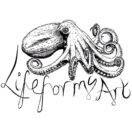The Leatherback Turtle and Plastic Pollution
Introducing Ruth the Luth – A story book to colour.
Our first Story Book.
We’ve just released the first of our new Children’s T-shirts, the barrel jellyfish and the leatherback turtle. To accompany them we’ve created Ruth the Luth a story book to colour. It’s a story about how small actions can make a difference to our planet and the creatures who share it with us. Our aim is to empower children to know that they can make a difference, in what can sometimes seem a world filled with negative news. Also we aim to give them some fun information and facts to encourage a life long love of the natural world.
This is the story of Ruth the Luth
We didn’t choose Ruth the Luth; she chose us. We always try to create products that will encourage and develop naturalists, young and old, to take action, to grow their hope of a wilder, richer world. Whilst discussing the subject for this first story book, Ruth the Luth jumped out at us.
Plastic bags have been an issue for leatherback turtles also known as Luth, for decades. Add a few decades more and they might be called plastic back turtles and their fossils might be called plastic belly turtles. Having worked with dead luths as a taxidermist in the 80s and 90s they are a species close to my heart. At that time they were just becoming recognised as a species that included the British Isles within their natural range. I grew up loving, collecting and hunting reptiles and reptile paraphernalia and, confronted with the luth, what’s not to love: A giant, reptilian sea creature that is British by choice, lured here as so few other species and people are … by our wonderful jellyfish populations.
Inspiration
My favourite books, as a child were Tootles the Taxi (A Ladybird Book) and Yertle the Turtle, along with anything else by Dr Seuss. Rhyming stories with personalities, applied to beings without a voice in the world outside the book. My moral foundations are more Seuss-ical than biblical! At school I breathed a sigh of relief when multiplication was presented to us, not as a mathematical concept but as a rhyme. My mum helped me further by turning maths into an imaginary hunting trip for bats and crabs. Academic success, for me, could only be attained through poetical or pictorial embellishment, my mind refused to let anything else in.
We remember things better if they are fun or follow a graspable pattern or, whether animals or objects, if they have a name. Satisfactory colouring books were a rarity for me as a child. The pictures were either very mainstream; cats, dogs, robins; badly drawn or too cartoony. I liked cartoons but wanted to know what animals really looked like as well. I didn’t have the skill to depict animals that I wanted to and colouring in had the potential to bridge the gap. Unfortunately the bridge as I wanted it, rarely existed so I was led to tracing.
Tracing and colouring are a fabulous combination and taught me how to draw more than anything else. Perspective and angles so difficult to convert from eye to paper can be grasped in seconds by tracing an outline. A moment later you can re-draw the outline, free-hand, using what you just learned and make adaptations to positions and perspective.
A voice for a turtle
I have had a lifetime rewarded by fabulous wildlife experiences but frustrated and marred by knowledge of extinction and destruction of habitats by human hands and ignorance. We cannot always make a difference on our own but by acting together we often can, even if it takes a long time coming round. Ruth has no voice of her own, but we can speak for her, on every shore, to protect her ocean realm, her chosen beaches and beaches we might chose that would be safer for her now.
We don’t go into this in the book, but luths, or leatherbacks or leathery turtles are ancient. Turtles pre-date dinosaurs and have long outlived them and, among the turtles, luths have an ancient bodyplan. Luth’s alive today, struggling to survive amid, modern shipping, fisheries, industrial war, pollution (including plastic), development and disturbance, visit beaches that their ancestors visited hundreds, thousands and perhaps even millions of years ago.
Long before Columbus or the Vikings crossed the Atlantic, Luths were doing exactly that. Hatchlings voyaging out at the height of Aztec and Mayan empires from Mexican beaches were seen by Roman’s, Celts, Vikings and probably the prehistoric masons transporting the bluestones from the Preselli Hills to the building site that would become the modern day ruin, Stonehenge. People who never would meet, sharing a natural heritage more mysterious and ancient than anything they knew or handed down to us, but so undervalued by most of humanity today. And that’s just one species, let’s save this one and get on with saving the others!
Inspiring conversation
As with our first T-shirts, made to inspire conversation and action for nature, we liked the idea of a T-shirt that tells a story, that has a background. Luths and Jellyfish go together (perhaps not in jellyfish opinion!) and we have pulled them together in our T-shirt, story book combination. The book arms the wearer of the T-shirt with information about the species and habitats they care about.
Ruth the Luth is a team effort, a quite rough first edition, but brings all my favourites together… animals, rhyme, facts, fun, creative activity, strategy and hope. It reaches into the life of the leatherback turtle and from the past to the future, in the hope that it might be someones first, ‘Save the Turtles handbook’. If one person enjoys it, as much as I enjoyed Tootles the Taxi or Yertle the Turtle or if one person takes action for the oceans because of it, then my life has been worthwhile.

